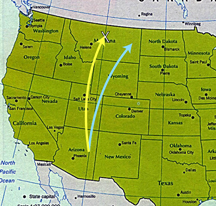If a cannonball were fired from Arizona to Montana it would curve toward the right because of the Coriolis effect. If it started out going due north it would end up northeast of where it started (blue arrow). If you were trying to hit a target due north of you then you would have to point your cannon toward the northwest (yellow line).
Click on image for full size
Map courtesy of the Perry-Castaneda Library at the University of Texas
The Coriolis Effect
To understand what the Coriolis effect is, let's
pretend that you're on the top of a mountain in
Arizona and you have a cannon. You want to fire a
cannonball and hit a flag pole that's on the top of
another mountain straight north of you in Montana, amost a thousand
miles (1600 km) away. If the Earth weren't rotating
you would want to point your cannon due north.
But the Earth is rotating. This causes our cannonball to appear to curve to the right. So we'll miss our target - our cannonball will land
east of the flag pole. What should we have done? We should have
pointed our cannon to the northwest. Then our cannonball
would curve a bit to the right and if we were careful -
bang - a hole in one!
Why did we use a cannonball and not a football? Because
something has to move a very long way before the Coriolis
effect is noticable - at least several hundred miles.
When you throw a football the path only curves a tiny
bit due to the Coriolis effect - far too small for you
to ever notice.
The Coriolis effect makes moving objects appear to curve toward the right in the northern hemisphere and toward the left in the southern hemisphere. In our example the cannon was pointing north but a similar thing would happen no matter which way we pointed our cannon. If our
cannon was pointed eastward our cannonball would appear to veer
toward the south. If our cannon was pointed southward our cannonball would appear to veer toward the west, and so on.
The Coriolis effect not only works with cannonballs, it also works on winds and ocean currents. It's what makes hurricanes spin around. It's also important on other planets, in stars, and in nebulae.
You might also be interested in:
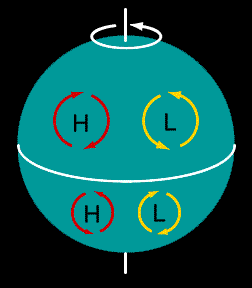
The Earth's spin causes the wind to curve. This is called the Coriolis Effect. The wind in the northern hemisphere curves to the right and the wind in the southern hemisphere curves to the left. When the
...more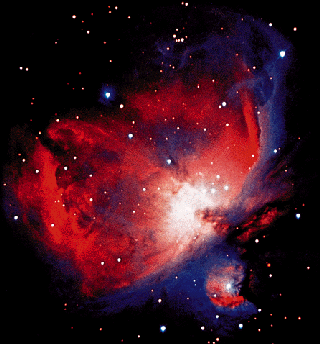
Why would we call nebulae stardust? Because the gas in nebulae is used to make new stars, and dying stars create nebulae from their gas. While stars are made of very hot, dense gas, the gas in nebulae
...more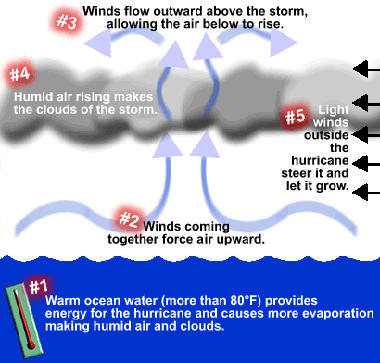
A tropical thunderstorm can grow into a massive hurricane under certain conditions. Sometimes several thunderstorms start rotating around a central area of low pressure. This is called a tropical depression.
...more
How do we know which way a hurricane will go? Forecasters track hurricane movements and predict where the storms will travel as well as when and where they will reach land. While each storm will make its
...more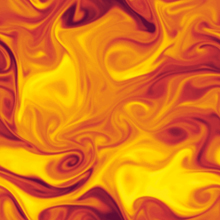
If you've ever ridden in an airplane, you might have some idea what turbulence is. When an airplane flies through a turbulent place in the atmosphere it will bounce around a bit as the wind outside blows
...more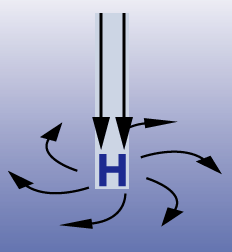
You may have seen a weather map with a blue H on it. This blue H means there is a high pressure system over that area of the map. Just what does that mean? There are no exact measurements that would make
...more
Sometimes water spins away from a surface ocean current, creating an eddy. The swirling water of an eddy can be more than 100 km (60 miles) in diameter. The center of some eddies is cool while the center
...more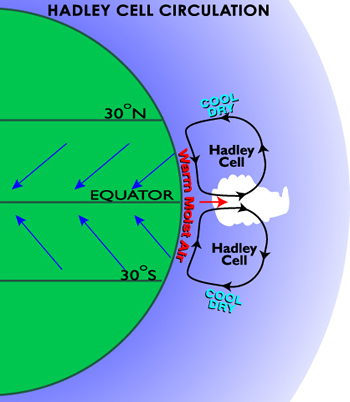
The Hadley cell is an atmospheric circulation pattern in the tropics that produces winds called the tropical easterlies and the trade winds. In the Hadley cell, air rises up into the atmosphere at or near
...more


